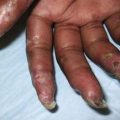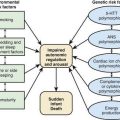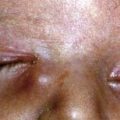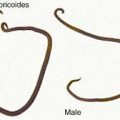Chapter 293 Flukes (Liver, Lung, and Intestinal)
Several different trematodes, or flukes, can parasitize humans and cause disease. Flukes are endemic worldwide but are more prevalent in the less developed parts of the world. They include Schistosoma, or the blood flukes (Chapter 292), as well as fluke species that cause infection in the human biliary tree, lung tissue, and intestinal tract. These latter trematodes are characterized by complex life cycles. Sexual reproduction of adult worms in the definitive host produces eggs that are passed in the stool. Larvae, called miracidia, develop in freshwater. These, in turn, infect certain species of mollusks (snails or clams), in which asexual multiplication by parasite larvae produces cercariae. Cercariae then seek a 2nd intermediate host such as an insect, crustacean, or fish or attach to vegetation to produce infectious metacercariae. Humans acquire liver, lung, and intestinal fluke infections by eating uncooked, lightly cooked, pickled, or smoked foods containing these infectious parasite cysts. The “alternation of generations” requires that flukes parasitize more than 1 host (often 3) to complete their life cycle. Because parasitic flukes are dependent on these nonhuman species for transmission, the distribution of human fluke infection closely matches the ecologic range of the flukes.
Liver Flukes
Fascioliasis (Fasciola hepatica)
Fasciola hepatica, the sheep liver fluke, infects cattle, other ungulates, and occasionally humans. This infection affects ~17 million people worldwide and has been reported in many different parts of the world, particularly South America, Europe, Africa, China, Australia, and Cuba. Although F. hepatica is enzootic in North America, reported cases are extremely rare. Humans are infected by ingestion of metacercariae attached to vegetation, especially wild watercress, lettuce, and alfalfa. In the duodenum, the parasites excyst and penetrate the intestinal wall, liver capsule, and parenchyma. They wander for a few weeks before entering the bile ducts, where they mature. Adult F. hepatica (1-2.5 cm) commence oviposition approximately 12 wk after infection; the eggs are large (75-140 µm) and operculated. They pass to the intestines with bile and exit the body in the feces (see Fig. 292-1). On reaching freshwater, the eggs mature and hatch into miracidia, which infect specific snail intermediate hosts to multiply into many cercariae. These then emerge from infected snails and encyst on aquatic grasses and plants.
Clonorchiasis (Clonorchis sinensis)
Infection of bile passages with Clonorchis sinensis, the Chinese or oriental liver fluke, is endemic in China, other parts of East Asia, and Japan. Humans acquire infection by ingestion of raw or inadequately cooked freshwater fish carrying the encysted metacercariae of the parasite under their scales or skin. Metacercariae excyst in the duodenum and pass through the ampulla of Vater to the common bile duct and bile capillaries, where they mature into hermaphroditic adult worms (3-15 mm). C. sinensis worms deposit small operculated eggs (14-30 µm), which are discharged by way of the bile duct to the intestine and feces (see Fig. 292-1). The eggs mature and hatch outside the body, releasing motile miracidia into local freshwater streams, rivers, or ponds. If these are taken up by the appropriate snails, they develop into cercariae, which are in turn released from the snail to encyst under the skin or scales of freshwater fish.
Lung Flukes
Paragonimiasis (Paragonimus spp.)
Human infection by the lung fluke Paragonimus westermani, and less frequently other species of Paragonimus, occurs throughout the Far East, in localized areas of West Africa, and in several parts of Central and South America. The highest incidence of paragonimiasis occurs in older children and adolescents 11-15 yr of age. Although P. westermani is found in many carnivores, human cases are relatively rare and seem to be associated with specific dietary habits, such as eating raw freshwater crayfish or crabs. These crustaceans contain the infective metacercariae in their tissues. After ingestion, the metacercariae excyst in the duodenum, penetrate the intestinal wall, and migrate to their final habitat in the lungs. Adult worms (5-10 mm) encapsulate within the lung parenchyma and deposit brown operculated eggs (60-100 µm), which pass into the bronchioles and are expectorated by coughing (see Fig. 292-1). Ova can be detected in the sputum of infected individuals or in their feces. If eggs reach freshwater, they hatch and undergo asexual multiplication in specific snails. The cercariae encyst in the muscles and viscera of crayfish and freshwater crabs.
Intestinal Flukes
Several wild and domestic animal intestinal flukes, including Fasciolopsis buski, Nanophyetus salmincola, and Heterophyes heterophyes, may accidentally infect humans who eat uncooked or undercooked fish or water plants. For example, F. buski is endemic in the Far East, where humans who ingest metacercariae encysted on aquatic plants become infected. These develop into large flukes (1-5 cm) that inhabit the duodenum and jejunum. Mature worms produce operculated eggs that pass with feces; the organism completes its life cycle through specific snail intermediate hosts. Individuals with F. buski infection are usually asymptomatic; heavily infected subjects complain of abdominal pain and diarrhea and show signs of malabsorption. Diagnosis of fasciolopsiasis and other intestinal fluke infections is established by fecal examination and identification of the eggs (see Fig. 292-1). As for other fluke infections, praziquantel (75 mg/kg/day divided tid PO for 1-2 days) is the drug of choice.
2007 Drugs for parasitic infections. Treat Guidel Med Lett. 2007;5(suppl):e1-e15.
Keiser J, Utzinger J. Emerging foodborne trematodiasis. Emerg Infect Dis. 2005;11:1507-1514.
Liu Q, Wei F, Liu W, et al. Paragonimiasis: an important food-borne zoonosis in China. Trends Parasitol. 2008;4:318-323.
Lun ZR, Gasser RB, Lai DH, et al. Clonorchiasis: a key foodborne zoonosis in China. Lancet Infect Dis. 2005;5:31-41.
MacLean JD, Cross J, Mahanty S. Liver, lung and intestinal fluke infections. In: Guerrant RL, Walker DH, Weller PF, editors. Tropical infectious diseases: principles, pathogens & practice. ed 2. Philadelphia: Churchill Livingstone; 2006:1349-1369.
Marcos LA, Terashima A, Gotuzzo E. Update on hepatobiliary flukes: fascioliasis, opisthorchiasis and clonorchiasis. Curr Opin Infect Dis. 2008;21:523-530.
Mas-Coma S, Valero MA, Bargues MD. Effects of climate change on animal and zoonotic helminthiases. Rev Sci Tech. 2008;27:443-457.
Millan JC, Mull R, Freise S, et al. The efficacy and tolerability of triclabendazole in Cuban patients with latent and chronic Fasciola hepatica infection. Am J Trop Med Hyg. 2000;63:264-269.
Sripa B, Kaewkes S, Sithithaworn P, et al. Liver fluke induces cholangiocarcinoma. PLoS Med. 2007;4:e201.
Zarrin-Khameh N, Citron DR, Stager CE, et al. Pulmonary paragonimiasis diagnosed by fine-needle aspiration biopsy. J Clin Microbiol. 2008;46:2137-2140.







